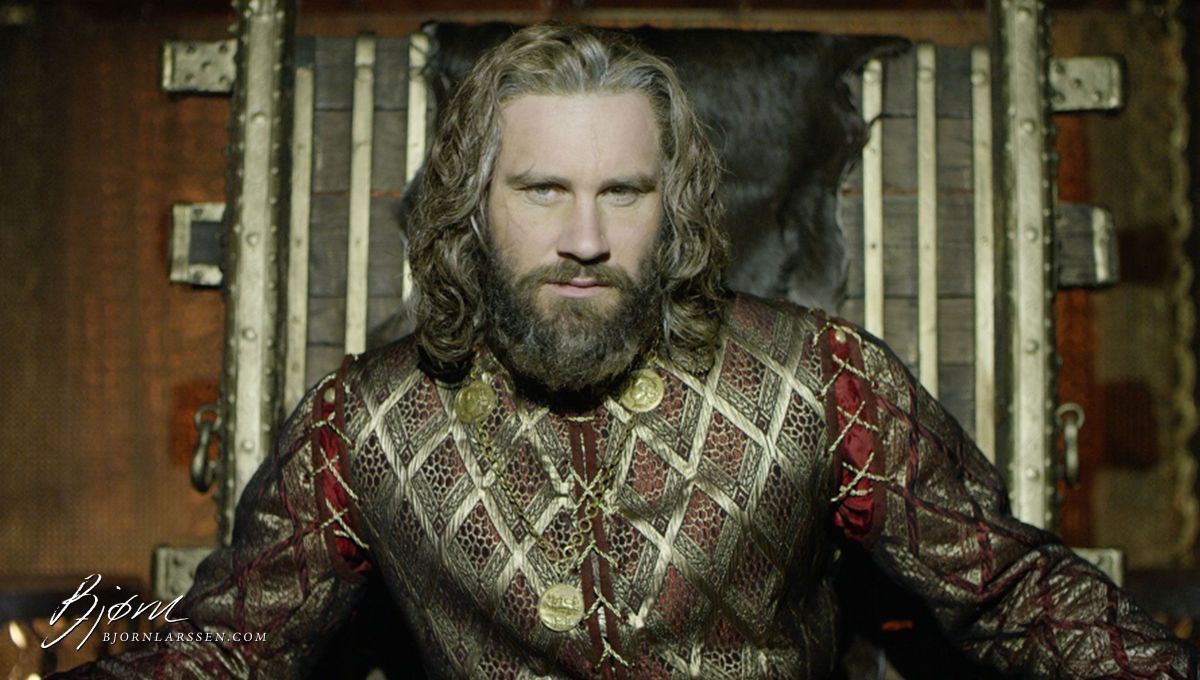
My first forge welding class with Casper Prager.
Part 1 • Part 2 • Part 3
Karl stopped travelling. He also stopped paying much attention to Gunnar, focusing entirely on Sóley. Gunnar was now free to work at the forge whenever he felt like it, unnoticed, alone, happy. He found a machine grinder operated with a pedal and figured out how to sharpen his knife with it – his third knife, and the first that was almost completely straight. Once he was done, he threw it into a corner, ready to start on the next one, determined to get it right, before realising he hadn’t eaten anything since breakfast many hours ago.
They took turns on the “bed” downstairs. Gunnar couldn’t decide which one he preferred. He felt oddly uncomfortable when sleeping upstairs with his mother, filled with a dreadful feeling that even her snoring expressed anger about something he had either done or not done. The night after, though, he would change his mind and decide that it was nothing compared to the physical discomfort of the new “bed”, which was a mostly flat pile of turf covered with a sheepskin. Also, when he stayed downstairs, his parents fought incessantly, quieter than before, but loud enough to be heard through the wooden ceiling.
“Your nerves,” Karl would say again and again. “Have you been drinking the herbs?”
“Like I’m a fool! I know they are poison! You want to get rid of me, so nothing stops you from seeing the others!”
“There are no others. How am I supposed to prove it to you? I don’t go anywhere anymore, except when I have to go to town…”
“Do you think I don’t know what happens in town?!”
“Nothing, I buy food, other necessities, then come back home as fast as I can.” Karl’s voice was becoming lower and quieter. Gunnar knew what that meant and shivered in his cold bed.
“I don’t believe you! She, they buy it all, then give it to you so you have an excuse!”
“Sóley, you’re being unreasonable. Please try the herbs. Your nerves…”
Gunnar finally dozed off, only to wake up with pain in his neck, his whole body stiff, cold. His left hand, which he slept on, was asleep and the pricks of pain started a moment later when blood found its way back. It was May, but the walls would only become warm for about two days at the end of August. They seemed to always be covered with a thin layer of frozen mold. Tonight he would be sleeping upstairs, where the wooden walls, cold as they were, didn’t feel so… slippery. But that meant he would be sleeping next to his mother…
*
In the morning, Gunnar grabbed a piece of bread and a mug of coffee, then retreated into the forge as quickly as possible. It was becoming his favourite place on Earth. Here nobody ever interrup–
Someone knocked on the front door and the boy nearly jumped out of his skin.
“Is Karl there? I need that axe.”
“Ah, it’s… it’s almost ready, I…”
“He didn’t do it,” said the man flatly. “Tell him I’ll be back tomorrow and it better be ready.” He departed, shaking his head, and Gunnar stared behind him before returning inside and picking up the axe. Its blade was cracked, and when Gunnar squinted he could see the crack was deeper than it looked, becoming thin as a hairline, but still present. Maybe it would be possible to simply remove some of the metal using the grinder…? It would be a bit smaller, but perfectly good…
A few minutes later he had to interrupt his parents.
“Good God!” exclaimed Karl. “You could have lost an eye! What have you done?”
“I was just trying– this man came, and he was asking–“
“Of course he was,” interrupted Sóley. “Your father makes a lot of promises, but never delivers on them. Come here. You’ve got a piece of metal in your forehead, how did you even do that, fool?”
“You can’t sharpen a broken axe,” said Karl, as Sóley huffed, puffed, and put iodine on the wound. Gunnar tried and failed not to hiss in pain. “The edge is made of hardened steel. It’s much harder, hence the name, but it breaks. As you can see.”
“It’s a miracle he can see at all! A bit lower, and he would never see anything again. Because someone doesn’t even–”
“We’re going to do it now,” announced Karl. “Sóley… please try the herbs, at least one time, just to see whether they help a bit. Gunnar and I are going to fix that axe right now.”
…
Blacksmithing: An axe and a deathRead More »



 Today is Icelandic National Day (Þjóðhátíðardagurinn), also known as the 75th anniversary of Iceland becoming a republic independent from Denmark. As it happens, two years ago we were in Iceland on that day. We missed everything.
Today is Icelandic National Day (Þjóðhátíðardagurinn), also known as the 75th anniversary of Iceland becoming a republic independent from Denmark. As it happens, two years ago we were in Iceland on that day. We missed everything.
 Today is sumardagurinn fyrsti – the first day of summer in Iceland. Since 1971 the first day of summer is a national holiday, complete with celebrations, parades, sporting events.
Today is sumardagurinn fyrsti – the first day of summer in Iceland. Since 1971 the first day of summer is a national holiday, complete with celebrations, parades, sporting events. 


